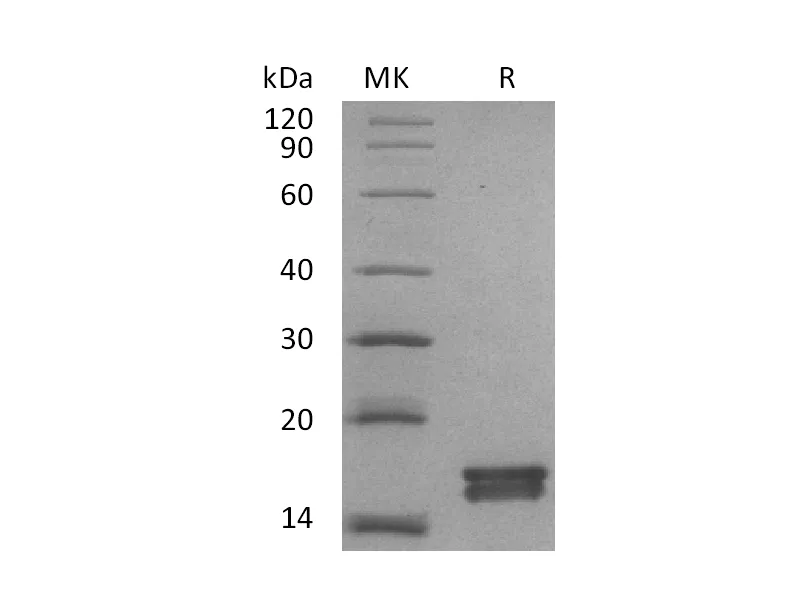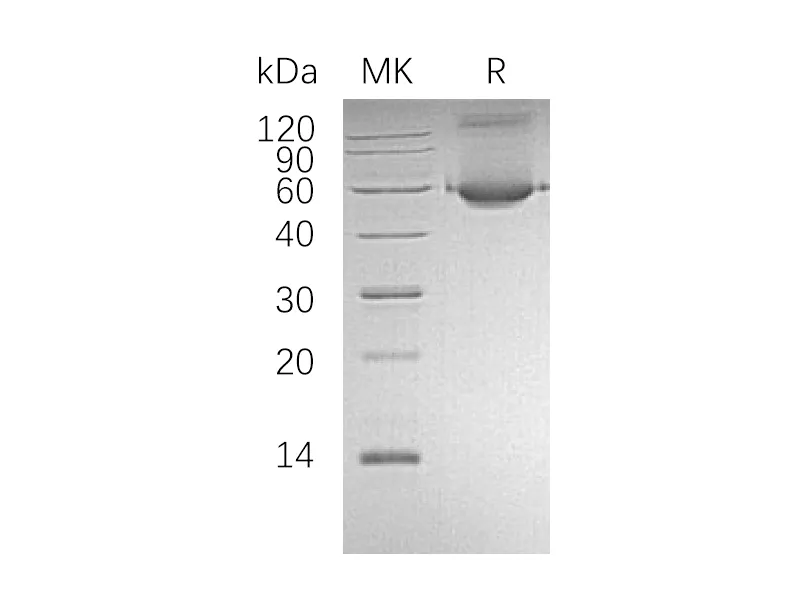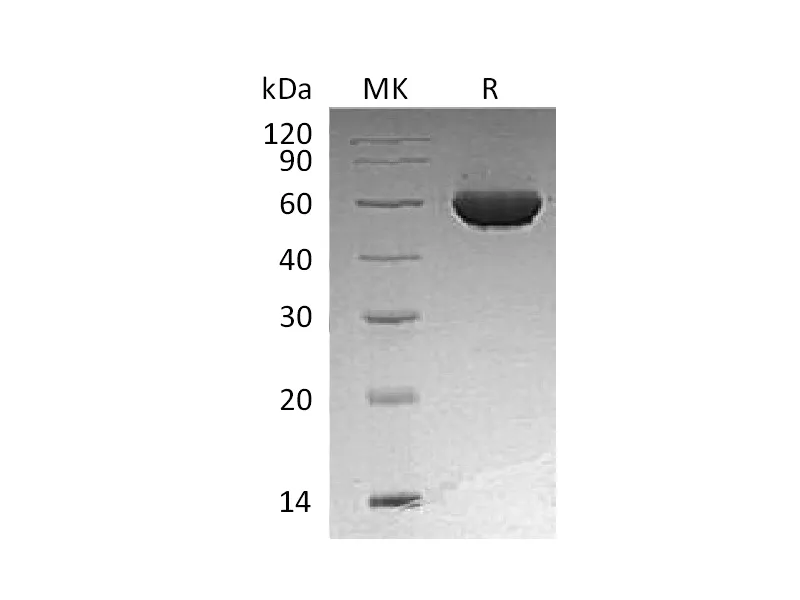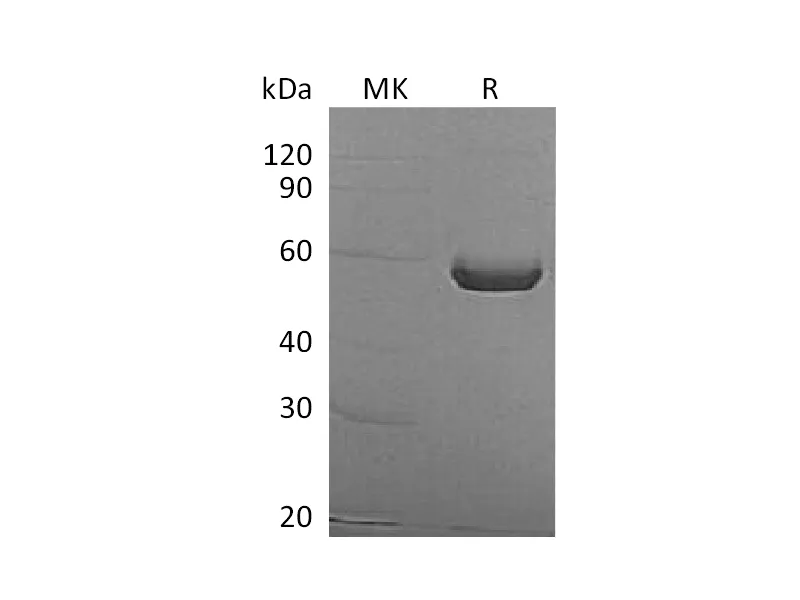Alternative Names
NKG2D ligand 1; NKG2DL1; ALCAN-beta; Retinoic acid early transcript 1I; UL16-binding protein 1; ULBP1
Background
NKG2D ligand 1, also called ULBP1, is a member of UL16-binding protein (ULBP) family which has also been termed the retinoic acid early transcript 1 (RAET1) family. Unlike the classical MHC class I molecules and the MIC molecules possess α1, α2 and α3 domains, ULBP/RAET1 family members lack α3 domain. ULBP1 is recognized by the activating receptor NKG2D on the surface of cytotoxic natural killer (NK) and T cells, and then promotes the lysis of cells expressing ULBP1 which is important for the immune surveillance. ULBP1 and several other family members, ULBP2 and ULBP5, own the ability to bind the human cytomegalovirus (CMV) UL16 glycoprotein. The human CMV glycoprotein UL16 binds to intracellular ULBP1 and so inhibits its expression at the cell surface, which reduces the susceptibility of the virus-infected cell to cytotoxic destruction by NK cells. The expression of ULBP1 has been found on some tumor cells and is implicated in tumor surveillance.
Note
For Research Use Only , Not for Diagnostic Use.




